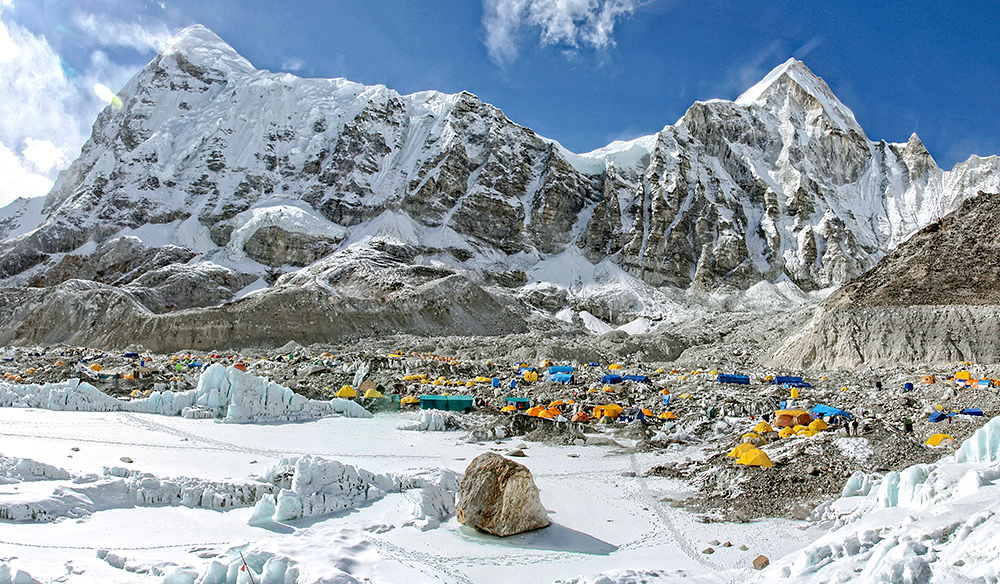When you hear stories about Everest, they usually involve people trying to get up the mountain.
Not for Kate Storey, ’07 PhD. At the end of May, she ran the Everest Marathon — a 42.2-kilometre race down the mountain from Everest’s South Base Camp that took her seven and a half hours. She finished as the second-quickest international female and eighth-quickest female overall.
When she’s not running the world’s highest marathon, Storey works as an associate professor in the School of Public Health at the University of Alberta. She’s also a Stollery Science Lab Distinguished Researcher, a CIHR/PHAC Applied Public Health Chair and director of SIRCLE, a research group that encourages schools to promote wellness with students through physical activity, healthy eating and positive mental health.
Whether working with kids or pushing herself to the limit, Storey has found that it takes a village to reach your goals. Here’s what she has learned about the importance of community when setting out to achieve your objectives.
1. Embrace Support
While running may not seem like a team sport, Storey had a whole crew — including friends, training mates, physiotherapists, doctors and trainers — helping her prepare for the race. And the team spirit continued on the mountain. Local runners gave her tips, guides encouraged her during training, and participants checked in on one another. “It’s OK to lean on others for help,” Storey says, “There’s no way I could have done this race alone.”
Likewise in her youth programs, support networks play a big role. The Indigenous Youth Mentorship Program, co-led by SIRCLE, is an after-school mentorship program based on the teachings of Indigenous scholars, in which younger kids learn from and are supported by Indigenous high school students. The mentors promote kids’ well-being through physical activity, nutrition and relationship building while instilling values including Belonging, Mastery, Independence and Generosity (from the Circle of Courage model).
2. Build Resilience
Running down Mount Everest is no easy feat. Storey had to be disciplined about her health and training regimen, which included strength training, Pilates, stairs and lots of running. She also trained in an altitude chamber to help prepare her body for differences in oxygen levels on the mountain. “There’s times when you don’t want to,” she says. “It’s 4:30 a.m. and you’re waking up to train and thinking, ‘What am I doing?’ ”
When she faced tough aspects of the marathon, she thought about the kids she works with and their ability to overcome hardship. “Many youth over the pandemic have faced big challenges,” Storey says. If they can do that, she thought while she was on the mountain, I can do this.


We at New Trail welcome your comments. Robust debate and criticism are encouraged, provided it is respectful. We reserve the right to reject comments, images or links that attack ethnicity, nationality, religion, gender or sexual orientation; that include offensive language, threats, spam; are fraudulent or defamatory; infringe on copyright or trademarks; and that just generally aren’t very nice. Discussion is monitored and violation of these guidelines will result in comments being disabled.